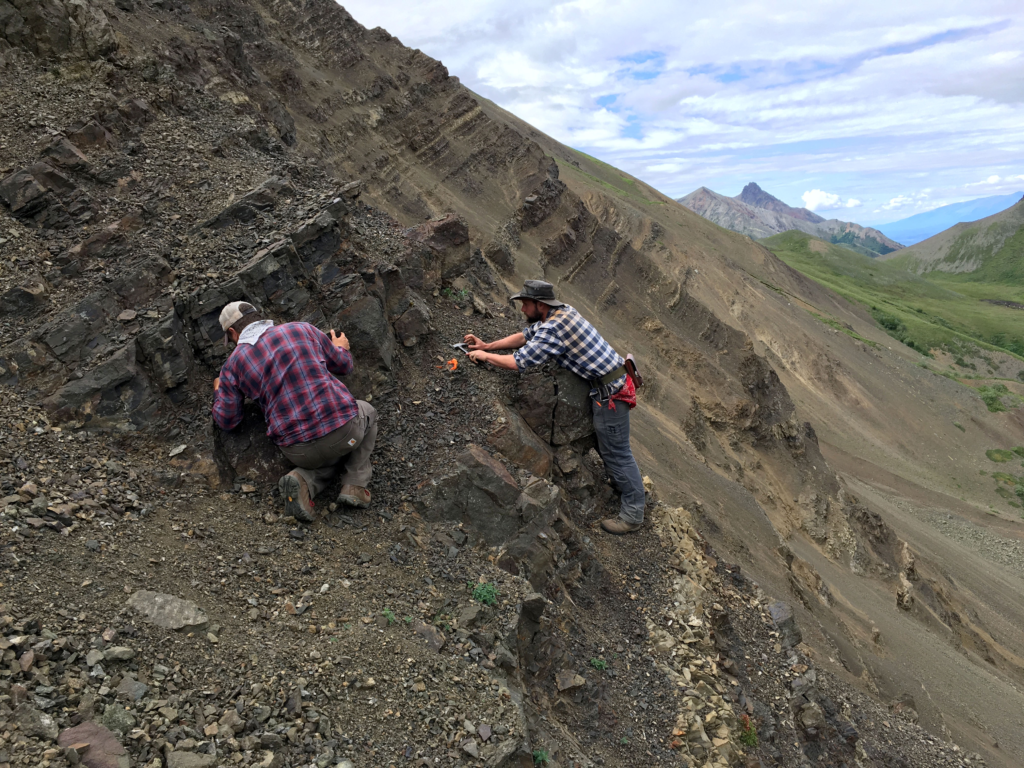About the Lab
Dr. Andrew Caruthers

Ben Gill (left) and Andrew Caruthers (right) survey an outcrop in the Talkeetna Mountains, Alaska. Photo credit: João Trabucho-Alexandre
I am a Faculty Specialist and Research Associate at Western Michigan University where I have enjoyed teaching a variety of courses for the Department of Geological and Environmental Sciences and my role as the head curator of the Schmaltz Museum. I hold a Doctor of Philosophy from the University of British Columbia and a Master of Science from the University of Montana. I currently reside in western Michigan with my wife and two kids.
My research is rooted as an international collaborative effort. This involves faculty members from several universities, museums, and affiliated institutions including: Dr. Ben Gill from Virginia Polytechnic Institute, Dr. Theodore Them from the College of Charleston, Dr. Darren Gröcke from Durham University, Dr. João Trabucho-Alexandre from Utrecht University, Dr. Jeremy Owens from Florida State University, Dr. Martyn Golding from the Geological Survey of Canada, and Dr. Martin Aberhan from the Museum für Naturkunde. Within our working group, we use a combination of invertebrate paleontology and isotope geochemistry to investigate the effects of paleoclimate change and mass extinction across various time intervals of Earth history.
More specifically this involves an understanding of the dynamics behind mass extinction within the greater Panthalassic Ocean during the early part of the Mesozoic (Triassic and Jurassic Periods). Most I have expanded these efforts to include Paleozoic (i.e. Silurian) strata of the Michigan Basin, where a major change in paleoenvironment destroyed an established reef system and inundated this shallow seaway with thick sequences of halite (= salt evaporites).
I have worked in the Cordilleran region of western North America since 2003 and have diversified expertise in the following areas: invertebrate taxonomy, biostratigraphy, chemostratigraphy, time scale calibration, terrane paleogeography and mass extinction.